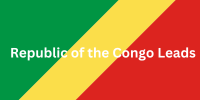While this method makes it easy to print designs from your home computer. And transfer them using an iron, it requires a more complex process to run a small business. The most advanced form of heat transfer is called plastisol transfer and is printed. By professional printers on special high-quality heat transfer paper.
The advantage of heat transfers is that you can order a stack of prints from your local printer and transfer them onto your t-shirts using a commercial middle east mobile number list heat press as you receive orders. Heat transfers make it relatively easy and quick to produce full-color images on t-shirts, making them an affordable option for short runs.
While affordable in the long run, a heat press can be a significant upfront cost. Additionally, the do-it-yourself nature of the process means you’ll have to spend more time making the t-shirts, and the end result may be lower quality and less durable than t-shirts that use other forms of printing.
Direct to garment (DTG)
The direct-to-garment printing process works like an inkjet printer. It is common in t-shirt printing businesses because it prints ink directly onto benefits of a strong corporate identity for companies the t-shirt and can produce full-color images accurately.
Direct printing produces print quality comparable to screen printing and is considered more premium than heat transfer printing. Because it works like an inkjet printer, there are no setup costs, unlike screen printing. This means it is easy and cost-effective to print small orders.
The major drawback of direct-to-garment printing is the lack of volume discounts for large orders, as it takes the same amount of time to print each t-shirt.
The last thing a visitor wants to see in your catalog
Is a poorly plagiarized t-shirt design. Your designs don’t have to be complex — in fact, most of the best-selling graphic tees are simple. What they do need to be is original.
To ensure quality prints for your t-shirt business, your agb directory design files should have a resolution of at least 300 pixels per inch (dpi or ppi), a transparent background, and be large enough to cover the actual print area of the t-shirt. Note that your specifications will vary depending on the printer and printing technique used.
- Quality
The second most important factor in starting an online t-shirt business is product quality. You can disappoint a customer once, but they won’t come back to your store. A design that fades and cracks or a t-shirt that shrinks and tears won’t help you retain customers.

